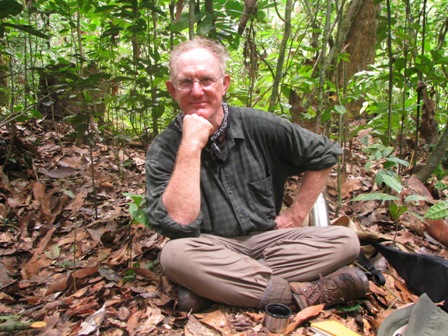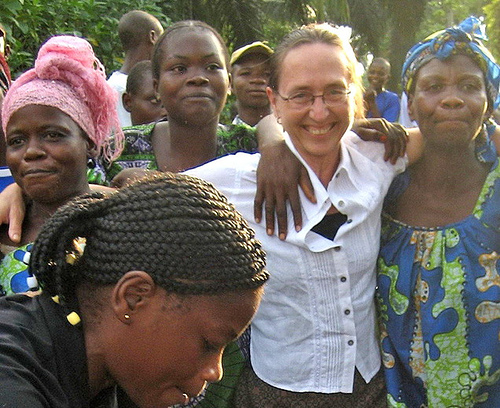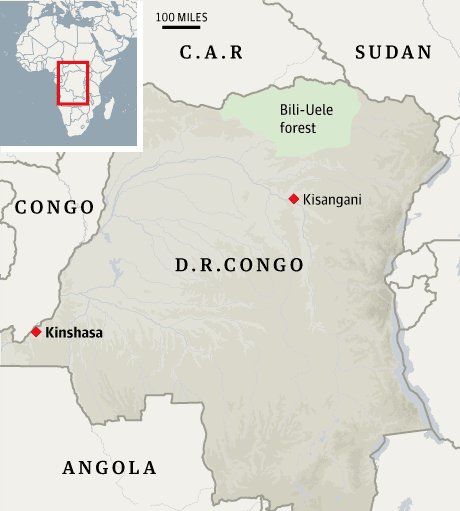Terese & John Hart
Over 30 years in the Congo..
Terese & John Hart - bonobos, okapi, Congo peacocks
Researcher | Conservationist | Field Biologist
John and Terese Hart met as students at Carleton College in Minnesota in 1970. John had applied for and received a Watson Fellowship that provided a finishing undergraduate six thousand dollars for a completely self-guided year-long project of their dreams. He had decided to spend that year with the Mbuti Pygmies in the Ituri Forest of Zaïre (to follow in the footsteps of Colin Turnbull, author of The Forest People). In January 1973 John left for Kinshasa, the capital of Zaïre. John’s Watson Fellowship stretched well beyond the intended 12 months. Terese applied for a posting with the Peace Corp, and when she finally arrived in Zaïre, he was 18 months into it and still in the Ituri Forest.
YOU CAN READ MORE ABOUT THAT STORY HERE: The Ituri Story
The Ituri Story is part of an autobiography, perhaps the only part that will ever be written. It rides through the years 1980-1983 with grounding in a more distant past and, inevitably, a pull forward from the decade that follows. The story is now written and, thereby tamed. But in the time I still have, I will always be thankful and always remember that it could have been otherwise…Terese
Then in 2007 "My husband and I set out to explore an unknown forest. We found bonobos, a new species of monkey, forest elephant, okapi, Congo peacock... Our mission now, with our TL2 staff, is to build effective conservation from village-base to national administration for TL2 and other critical conservation areas of DR Congo. Now as directors of the TL2 Project, John & Terese work with an outstanding team of Congolese field biologists..."
TERESE TELLS HER STORY
After more than thirty years in DR Congo, I am now coordinator of the TL2 project (Tshuapa-Lomami-Lualaba project). I work closely with Ashley, who is now paddling up the Lomami and keeping us updated in this blog. But you will read me here, too, working to the north and west of TL2 and putting nature conservation in the local context — as I understand it.
I came to the Ituri Forest in 1974 as a Peace Corps volunteer. Those two years I taught high school Biology, lived in a Swahili-speaking family and collected dragonflies. John Hart, a friend from college, also in Congo, and I decided to get married. This idea came one night on a two-month bicycle trip we took along the Albertine Rift.
In 1980 we returned to DR Congo together, with a 2 year old daughter, to do our PhD research, John on rain forest antelope and myself, the trees. After two and a half years in the Ituri Forest we returned to the States, now with two daughters.
The first project John and I shared was a study of rainforest giraffe, the Okapi. Based in Congo’s Ituri Forest we captured okapi, put on radio collars and then followed the released animals with hand-held antenna over a 50 sq km checkerboard trail system. During that four-year project our third (and last) daughter was born. New York Zoological Society continued to support us as we diversified our animal and forest work. We also built a Research and Training Center (CEFRECOF) and I was first director. We worked with our colleagues to assure that part of the Ituri Forest was protected as the Okapi Reserve.
During the years of Congo’s Civil Wars 1996 – 2002, I moved to a more national approach to conservation. From the capital, Kinshasa, I served briefly as national director for an international conservation NGO. Now, still from a Kinshasa base, I work independently with conservation of Congo’s little-known natural richness as first priority. And top of the list is exploration of the Tshuapa-Lomami-Lualaba basins (TL2). As coordinator of the TL2 project, I am convinced we will find out what must be protected and help make conservation a reality.
JOHN TELLS HIS STORY
I first came to Congo in 1973 to live with and document the ecology of the Mbuti Pygmies in Congo’s eastern forests. That was the beginning of the bushmeat hunting era. We have watched commercial hunting spread further and further into the heart of the forest since then. Over the last 20 years I have been inventorying animals in different forests around central Africa. Now, finally, we are finding out what is in the very center of the most central of all African forests, between the Tshuapa, Lomami and Lualaba (=TL2).
Go back to: Researchers & species experts
ARTICLES OF INTEREST:
Introducing a New Good Guy to the Lomami from bonoboincongo.com
Okapi-killing warlord shot dead in the Democratic Republic of the Congo from Mongabay.com - 2014


